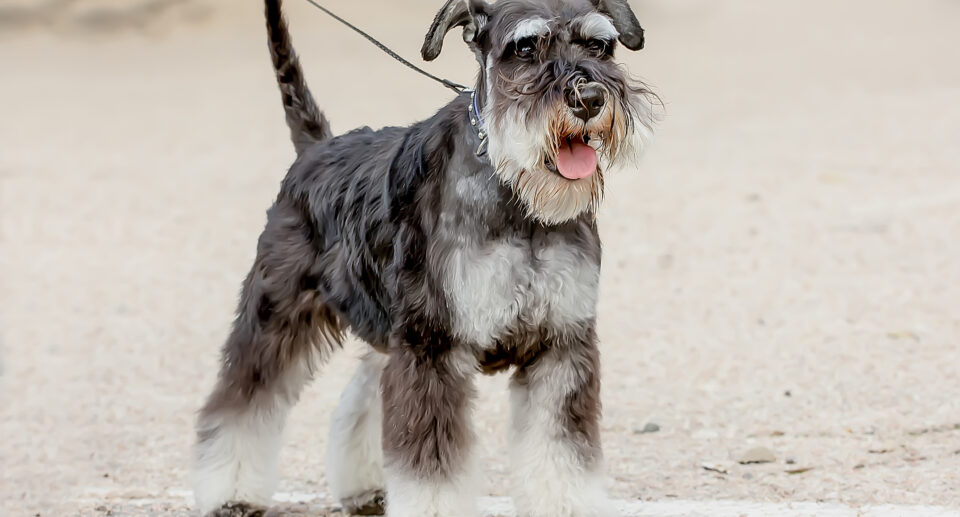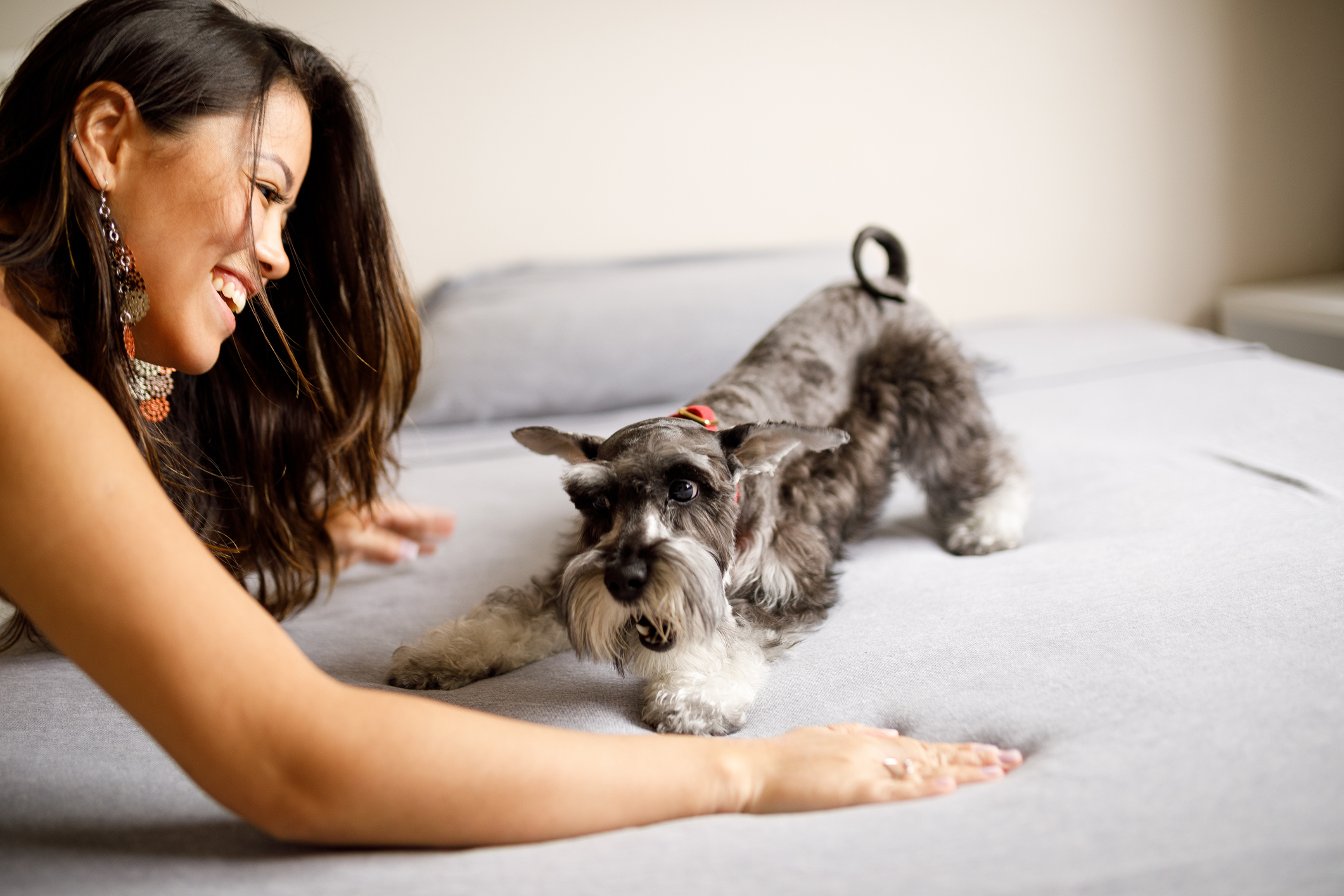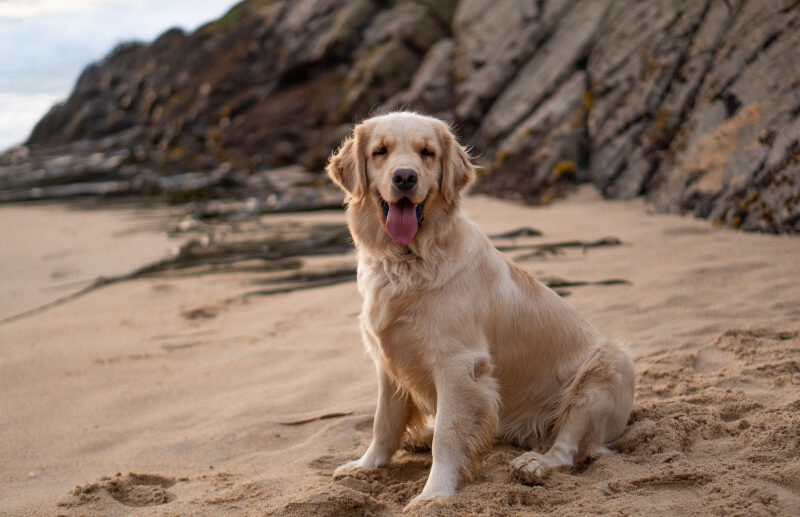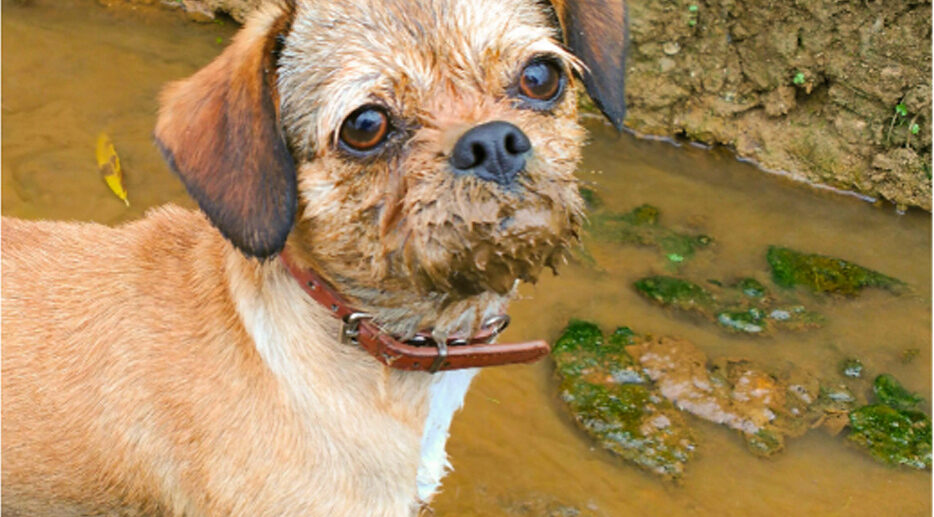All About Your Schnauzer: Care Guide and Breed Info

September 25th marks National Schnauzer Day, a day to appreciate and learn about this charming, intelligent breed.
Whether you’ve got a mustachioed marvel of your own or you’re just a fan of all dogs, learn all about the Schnauzer breed history, breed standard and traits, and best care to prevent and manage common health issues in Schnauzers.
How The Schnauzer Came To Be
The name Schnauzer directly translates to “Snouter,” in German, a nod to the breed’s distinct mustache, eyebrows and bearded muzzle. Those adorable tufts once served the purpose of protecting the dog’s nose and eyes from dirt, debris, and scratches from varmint.
Schnauzer-like dogs first appeared in German paintings and sculptures dating back as early as the 15th century. The breed was first developed in the German state of Bavaria.
The Standard Schnauzer was the original, founding breed, later cross-bred to create the Miniature and Giant breeds. The standard Schnauzer, then known as the wire-haired Pinscher, was an all-purpose farm dog. From herding and hunting to guard dog duties, these dogs developed excellent adaptability, intelligence, and problem-solving skills, traits that the breed is still known for today.
Giant Schnauzer (left), pictured with German Shepherd.
The Giant Schnauzer was cross-bred with larger breeds like Great Dane primarily for the purpose of pulling carts and herding cattle to the market. With the development of railroads, they were no longer needed to aid cattle transportation by the early 19th century, becoming better known as guard dogs for butcher shops and breweries, as well as for military and police work. Like the Standard, the Giant Schnauzer is recognized as a distinct breed by the AKC as a part of the Working Group.
The Miniature Schnauzer was developed to be a companion dog, with a compact size better suited for indoor living spaces. Cross-bred with smaller breeds like the Affenpinscher and Miniature Poodle, the Mini is its own distinct breed with an independent temperament more similar to that of a Terrier. In fact, the breed is currently categorized by the AKC as a part of the Terrier Group.
Since the dogs are no longer needed to work on farms, the breeds have become popular in their own right as clever, protective, highly trainable family dogs. They’re as adaptable as ever, excelling in barn hunt, agility, obedience, earth dog trials, and just about any sport, task, or activity. Personable and eager to please, they’re happy to be by their human’s side whether it’s for exercise, work, or just cuddling up on the couch.
Schnauzer Breed Traits
Though very similar in appearance, the Standard, Giant, and Miniature Schnauzer are three distinct breeds recognized by the AKC.
The Standard Schnauzer stands at about 17.5 to 19.5 inches at the shoulder and weighs about 30-50 pounds for a sturdy, medium-sized working or companion dog.
The Giant Schnauzer is about 23.5 to 27.5 inches at the shoulder and may weigh about 55 to 85 pounds. Despite its name, the Giant Schnauzer is not a giant breed, and can be considered a medium to large dog.
The Miniature Schnauzer is of course the smallest of the three, standing just 12 to 14 inches at the shoulder and weighing just 11 to 20 pounds.
All three Schnauzer breeds have a double coat with a rough, wiry top coat that’s resistant to dirt and moisture, with a soft, downy undercoat.
The Standard, Miniature, and Giant Schnauzer are typically seen in solid black and the classic salt-and-pepper coat colorings. Miniature Schnauzers are commonly seen in solid white, though white, cream, and other color variations are not recognized by the AKC breed standard.
Common Health Issues in Schnauzers
Overall, Schnauzers are healthy dogs with few health issues. Reputable breeders will have had their breeding stock screened and tested for health issues like hip dysplasia, eye disease, and hypothyroidism.
Progressive retinal atrophy (PRA) most commonly seen in the Miniature Schnauzer, is a congenital condition that causes the light-sensing receptors in the retina to deteriorate over time. It typically manifests as night blindness around 3-5 years of age and will eventually progress to complete blindness. This condition is not painful and develops gradually, so while there is no treatment or cure, dogs diagnosed with PRA generally adapt well to inevitable vision loss. Miniature Schnauzers are also more susceptible to cataracts than other breeds.
Hypothyroidism is common in Giant Schnauzers, affecting up to 20% of the breed population. This congenital condition is usually attributed to an autoimmune dysfunction. Dogs with hypothyroidism tend to show signs like lethargy, weight gain, and poor skin and coat health at around 3-6 years old. Hypothyroidism can usually be managed with lifelong medication.
Schnauzers, especially Miniatures, are especially susceptible to pancreatitis. Pancreatitis is the painful inflammation of the pancreas after a meal that’s high in fat. The pancreas produces abnormally high amounts of digestive enzymes, causing the organ to essentially digest itself, leading to painful, potentially life-threatening complications.
Standard and Giant Schnauzers may develop hip dysplasia a condition in which the ball-and-socket of the hip joint do not fit together properly, potentially leading to painful degenerative arthritis over time.
How To Care for Your Schnauzer

The Miniature Schnauzer has a high prey drive that should be regularly challenged through playtime.
Like all dogs, Schnauzers need a complete, balanced diet every day. A high quality dog food that’s formulated for their age, size, and body condition is best. Fresh foods can be a great source of disease-fighting antioxidants, protein, and healthy fats, though Schnauzers should never be given fatty table scraps as they’re prone to pancreatitis.
Schnauzers, like all dogs, need daily exercise and mental stimulation to stay happy and healthy. Miniature Schnauzers, like other breeds in the Terrier Group, have a high prey drive and tend to chase squirrels, mice, and other small animals. All three of the breeds are highly intelligent and quickly pick up new skills, easily picking up on their family’s routines and even unintentionally learning new words by paying close attention to their human family members.
The Schnauzer has a wiry double coat that’s best maintained by hand-stripping the undercoat, leaving the rough, water and dirt resistant top coat intact. Hand-stripping produces a hardy, protective coat that’s well suited for the outdoors. However, clipping is preferred for family dogs as it may be easier to maintain, as the protective topcoat is not as essential for companion dogs that spend most of their life indoors.
Why We Love Schnauzers
The Schnauzer is a multi-tasking, well-rounded, highly intelligent breed. With their serious expression and unexpectedly goofy, energetic temperament, it’s easy to see why this breed has charmed its way from the Bavarian farmlands to cozy indoor companionship as a popular family dog.
If you’re looking forward to adopting a Schnauzer into your family, whether you’re a fan of the honorary terrier Miniature Schnauzer, the classic, loyal Standard, or the gentle Giant, consider looking for a reputable breeder registered with the AKC and associated Schnauzer breed club. Or, find a purebred or Schnauzer mix at your nearest breed specific rescue or at a shelter near you.
VISION
Every pet deserves to live a long, happy, healthy life.





